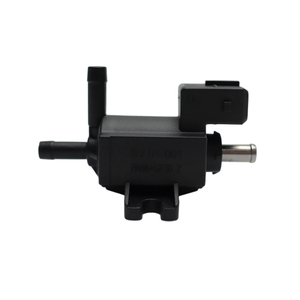
All categories
Featured selections
Trade Assurance
Buyer Central
Help Center
Get the app
Become a supplier

(382 products available)


















































The Mk4 GTI turbo is one kind of turbocharger for the Volkswagen Golf GTI cars. The Mk4 GTI turbo comes in different types, depending on the model and manufacturer. Here are some common types of Mk4 GTI turbo:
Garrett Turbocharger
Garrett turbochargers are known for their durability and reliability. They are often used in high-performance applications. Garrett turbochargers can provide significant power gains over the stock turbocharger.
BorgWarner Turbocharger
BorgWarner turbochargers are known for their efficiency and spool time. They are often used in racing applications. BorgWarner turbochargers can provide quick boost response, making them ideal for track use.
K04 Turbo Upgrade
The K04 turbo upgrade is a popular choice among Mk4 GTI enthusiasts. The K04 turbocharger is larger than the stock turbocharger and can provide significant power gains. The K04 turbocharger is compatible with most Mk4 GTI models with a few minor modifications.
GTX Turbocharger
The GTX turbocharger is a high-performance turbocharger. GTX turbochargers are known for their high power output and efficiency. GTX turbochargers can handle high levels of boost, making them suitable for extreme performance builds.
Frankenturbo F4i Turbo Kit
The Frankenturbo F4i turbo kit is an aftermarket turbo kit. It is designed to significantly increase the power of the Mk4 GTI. Frankenturbo F4i turbo kits are known for their excellent engineering and quality components. The F4i turbo kit can provide a substantial increase in horsepower and torque.
The specifications of the MK4 GTI Turbo differ depending on the model and year. Generally, here are the specifications:
Choosing the right mk4 gti turbo for a business involves understanding the target market, researching suppliers, and evaluating product offerings. Here are some insights:
Know the Audience
Understand the primary market for these turbos. Are they targeting car enthusiasts who want to enhance their GTI's performance, or are they catering to a more budget-conscious crowd? Knowing the audience will help determine the kind of turbos to stock up on.
Research Suppliers
Look for reliable and reputable suppliers on Alibaba.com. Read reviews, check their transaction history, and ensure they have a good reputation. It's also important to communicate with the supplier to understand their customer service level.
Diversity in Product Offering
Select suppliers that offer a wide range of mk4 gti turbo kits to cater to different customer needs. Consider stocking brands, turbo sizes, and other components like wastegates and blow-off valves. A diverse product range can attract more customers.
Quality Assurance
Quality is paramount when dealing with performance parts. Ensure that the mk4 gti turbo parts have undergone quality control and are consistent. Some customers might be interested in aftermarket parts because they are affordable. Ensure that the aftermarket mk4 gti turbo parts are of good quality.
Compliance with Standards
Ensure that the mk4 gti turbo upgrades comply with local regulations and standards. Some regions may have strict emission and noise level regulations. It's crucial to ensure that the turbos meet these requirements to avoid legal issues and penalties.
After-Sales Support
Consider the after-sales support offered by the supplier. Will they provide technical assistance in case of any issues? What is their return and warranty policy? Reliable after-sales support can save businesses a lot of time and money.
Market Trends
Stay updated with the latest trends in the automotive aftermarket industry. Are there any new turbo technologies gaining popularity? Are there any specific mk4 gti turbo models in high demand? Market research can help businesses make informed decisions and stay ahead of the competition.
Before replacing a turbo Volkswagen mk4, it is essential to consider whether the vehicle is still in good condition. If the car is in excellent condition, users may want to replace the turbo with a better one. However, if the vehicle is old, users might consider letting the car die rather than spending so much on a turbo replacement.
Here are some general steps for replacing the Mk4 GTI turbo:
Replacing the Mk4 GTI turbocharger is a complex process that requires mechanical knowledge and experience. Follow the manufacturer's instructions for the specific turbocharger model being installed. Here is a step-by-step guide to replacing the Mk4 GTI turbo:
Q: Is the mk4 gti turbo good for beginners?
A: The mk4 gti turbo can be a good choice for beginners, especially those interested in cars and performance. It offers a balance of power and drivability, making it enjoyable to drive without being overly aggressive. Additionally, the mk4 platform is relatively straightforward to work on, which can be a plus for beginners who want to learn about car maintenance and modifications.
Q: How fast is a stock mk4 gti turbo?
A: The stock mk4 gti turbo has a 0-60 mph time of around 6.5 to 7 seconds, depending on the specific model and conditions. The top speed of the mk4 gti turbo is approximately 140 mph (225 km/h).
Q: Can the mk4 gti turbo be used for track days?
A: Yes, the mk4 gti turbo can be used for track days. Its performance capabilities and handling make it a suitable car for track enthusiasts. However, some modifications and preparations, such as upgrading brakes, suspension, and safety equipment, are recommended for optimal track performance and safety.
Q: What are common issues with the mk4 gti turbo?
A: Common issues include DV, coilpacks, and sensor-related problems. Maintaining regular maintenance and addressing issues promptly can help ensure the mk4 gti turbo's reliability and performance.